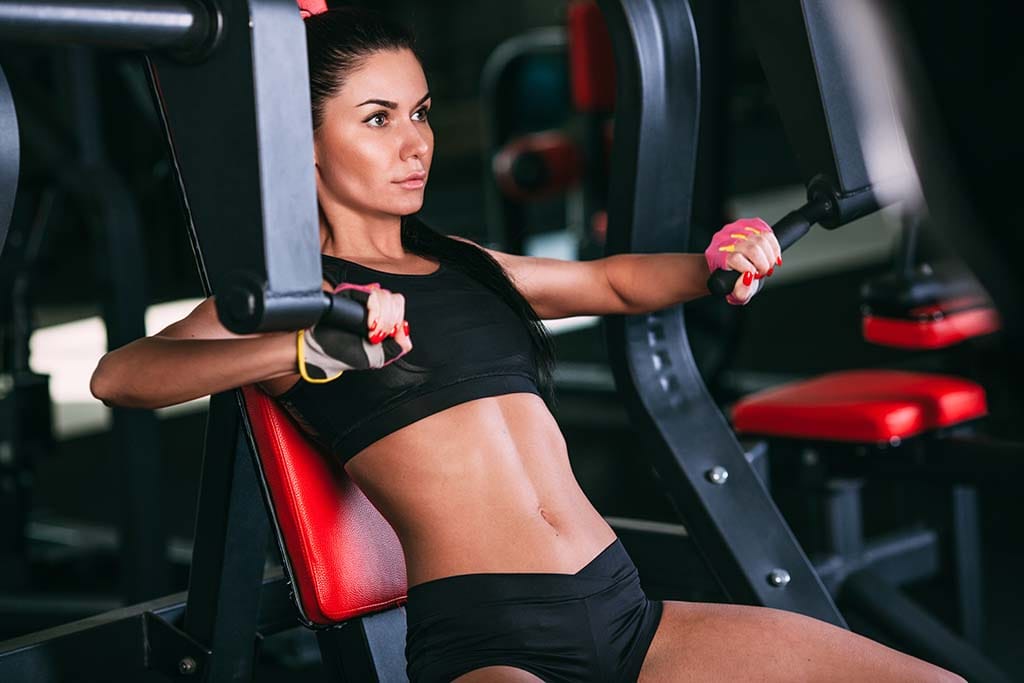Chest Workout: Top 5 Chest Exercises
Building a Stronger Chest: On top 5 chest exercises, a well-rounded chest workout should include a variety of exercises that focus on different angles and areas of the chest.
Movements like the chest press, push-ups, and pull-ups are excellent staples, as they engage the upper, middle, and lower portions of the chest muscles.
Incorporating a range of chest exercises not only promotes balanced muscle development but also helps prevent plateaus by challenging the muscles in diverse ways.
For those interested in optimizing their training, knowing the Top 5 Chest Exercises can be a game changer. These exercises are often recommended for their effectiveness in targeting multiple parts of the chest and for promoting consistent strength gains over time.
Understanding Chest Anatomy
To effectively train your chest, it’s important to understand the basic anatomy of the pectoral muscles. The chest is composed primarily of two key muscles: the pectoralis major and the pectoralis minor.
- The pectoralis major is the larger, more prominent muscle group, located near the surface and responsible for much of the visible chest definition. It’s further divided into two parts:
- The clavicular head, which targets the upper portion of the chest
- The sternal head, which focuses on the middle to lower regions
- The pectoralis minor, on the other hand, lies beneath the major and supports the overall function and stability of the shoulder and chest.
Most chest workouts—especially the Top 5 Chest Exercises—aim to engage the pectoralis major, as it provides the greatest visual and functional impact during strength training.
Tailoring Your Chest Training to Your Fitness Level
Just like with any strength-based workout, the intensity, weight, and volume used in your chest routine should align with your personal fitness level.
It’s crucial not to overload your muscles with weights that compromise your form, as this can lead to unnecessary strain or injury. Instead, start with manageable resistance and gradually increase it as your strength and endurance improve.
When in doubt, consulting a certified personal trainer or physiotherapist can provide you with a customized plan that safely incorporates some of the Top 5 Chest Exercises, ensuring you’re maximizing results without risking harm.
Whether you’re a fitness enthusiast or a beginner looking to sculpt your upper body, understanding the structure of the chest and how different exercises affect its various parts is key to long-term success.
By combining compound and isolation movements—and by including the Top 5 Chest Exercises in your program—you’ll be on the right track to achieving a strong, defined, and well-balanced chest.
Essential Chest Exercises for Maximum Muscle Growth
To effectively strengthen and sculpt your chest, your workout routine should include a minimum of 3 to 4 diverse exercises that engage both the pectoralis major and pectoralis minor.
Varying your chest exercises ensures that all parts of your chest—upper, middle, and lower—are activated, contributing to a fuller and more defined chest.
Whether you’re new to training or refining an advanced routine, including movements from the Top 5 Chest Exercises is a smart way to build strength and symmetry. Below is a breakdown of some highly effective exercises to consider for your next chest day.
- Inclined Chest Press with Dumbbells
Targeted Area: Upper pectoralis major
This is one of the most effective exercises to target the upper chest, helping to develop volume and lift in the upper pectorals. Performed using a weight bench adjusted to an inclined angle, here’s how to do it properly:
Sit back on an inclined bench with a dumbbell in each hand, palms facing forward. Choose a weight that challenges you without compromising your form.
- Extend your arms directly above your chest, keeping a slight bend in your elbows. The dumbbells should be close but not touching.
- Slowly lower the weights until your arms are bent at a 90-degree angle, feeling the stretch in your chest. Inhale during this movement.
- Push the dumbbells back up to the starting position, exhaling as you lift.
💡 Pro Tip: Begin with lighter weights and gradually increase resistance as you build strength. A smart rep scheme is 12-12-10-8, increasing the weight slightly each set while reducing the reps.
This movement is often included in the Top 5 Chest Exercises due to its effectiveness at targeting the elusive upper chest area. You can also perform the same motion on a flat bench to shift focus toward the middle portion of your chest.
- Barbell Chest Press
Primary Muscle Worked: Mid-section of the pectoralis major
A staple in nearly every chest routine, the barbell chest press is a classic and highly effective movement for developing upper-body strength and adding thickness to the mid-chest.
As one of the Top 5 Chest Exercises, it’s a go-to for beginners and seasoned lifters alike due to its ability to stimulate overall pectoral mass and power.
How to Perform:
- Begin by positioning a flat bench beneath a barbell rack. Lie flat on your back with your feet planted firmly on the ground for stability.
- Grip the barbell with both hands slightly wider than shoulder-width apart. Your wrists should stay straight and aligned with your forearms.
- Unrack the barbell and slowly lower it toward your chest, bending your elbows until the bar gently touches your chest. Inhale during the lowering phase.
- Push the bar upward in a controlled motion until your arms are fully extended. Exhale as you press the weight up.
✅ Recommended Routine: Perform 4 sets of 8 to 12 repetitions, resting for about 60 seconds between each set to recover and maintain form.
💡 Pro Tips:
- When increasing your load, always use a spotter to help guide the bar safely and reduce the risk of injury.
- Dumbbells can be used as an alternative to the barbell for greater range of motion and to engage stabilizing muscles.
Thanks to its compound nature and muscle-building efficiency, the barbell chest press is consistently ranked among the Top 5 Chest Exercises for building size and strength in the chest. If performed consistently and with proper form, it can greatly enhance the overall shape and density of your upper body.
- Dips on Parallel Bars
Target Area: Lower portion of the pectoralis major
While dips are traditionally recognized for their ability to build triceps strength, a simple shift in body position can transform this movement into a powerhouse chest exercise—specifically for developing the lower pecs.
When performed with a slight forward lean, parallel bar dips become one of the most effective and underrated exercises for sculpting the bottom of your chest, earning them a spot among the Top 5 Chest Exercises.
How to Perform:
- Begin by gripping the parallel bars firmly and lifting your body off the ground so that your arms are fully extended and locked beneath you.
- Cross your feet behind you for balance, and lean your upper body slightly forward—this adjustment shifts the focus from your triceps to your chest.
- Lower your body in a controlled manner by bending your elbows until your arms form approximately a 90-degree angle. Inhale as you lower.
- Push yourself back up to the starting position by extending your arms, exhaling as you rise.
✅ Recommended Routine: Perform 4 sets of 8 to 12 reps, with 1-minute rest intervals between sets.
💡 Pro Tips:
- Be mindful of your body position—maintaining that forward lean is key to ensuring your lower chest remains the primary target.
- If you’re new to dips or building strength, consider using an assisted dip machine or resistance bands for support.
- For more advanced lifters, adding a dip belt with weight plates can further intensify the workout.
Among the Top 5 Chest Exercises, dips offer a unique advantage—they not only build chest depth but also help develop shoulder stability and core control. When executed correctly, this compound movement is a powerful addition to any chest training routine.
- Push-ups
Target Area: Mid-section of the pectoralis major
Push-ups are a timeless and highly effective bodyweight exercise that targets the mid-chest and enhances overall upper-body strength. One of the simplest and most accessible exercises, push-ups can be performed anywhere, making them an excellent addition to your routine.
Despite their simplicity, they offer a robust workout that engages not only the chest but also the shoulders, arms, and core, securing their place in the Top 5 Chest Exercises.
How to Perform:
- Start in a plank position, with your hands placed directly beneath your shoulders. Keep your body aligned from head to heels, ensuring your core is engaged.
- Lower your body toward the ground by bending your elbows, keeping them angled slightly out to the sides. Make sure your chest is lowered in a controlled manner, and your abdomen remains tight throughout the movement.
- Once your chest nearly touches the floor, press yourself back up to the starting position by straightening your arms. Exhale as you push up.
✅ Recommended Routine: Perform 4 sets of 15 to 30 reps, adjusting the number of reps based on your fitness level.
💡 Pro Tips:
- Keep your body in a straight line, avoiding sagging at the hips or arching your back.
- To progress, consider variations like incline push-ups, decline push-ups, or adding a clap between reps to increase intensity.
- If you’re just starting, you can modify the push-up by doing them on your knees or against a wall for a gentler introduction to the movement.
Push-ups are one of the Top 5 Chest Exercises because they engage multiple muscle groups while building functional strength and endurance. They’re perfect for any fitness level and can be easily scaled to meet your goals, making them a cornerstone exercise for developing a stronger, more defined chest.
- Cable Cross-over
Target Area: Upper and mid-section of the pectoralis major
The cable cross-over is an excellent exercise for finishing off a chest workout, particularly because it provides a comprehensive engagement of the upper and mid-chest. Not only does this exercise target the pectoral muscles, but it also sculpts the area between the two pectorals, adding even greater definition and depth.
Its smooth, controlled motion makes it an ideal choice for refining the chest and giving it that coveted defined look, which is why it earns its place among the Top 5 Chest Exercises.
How to Perform:
- Begin by adjusting the cable machine to shoulder height, holding one handle in each hand.
- Stand with your feet shoulder-width apart, and grasp the handles firmly. Your arms should be extended slightly forward with your elbows just slightly bent.
- Step forward and pull the cables down in a controlled motion, crossing your hands in front of your body as you lower them toward your waist. Focus on squeezing your chest as you bring your hands together.
- Return to the starting position slowly, with your hands coming back to shoulder level, and resist the urge to let the weights snap back quickly. Inhale as you return to the start position.
✅ Recommended Routine: Perform 4 sets of 12 to 15 reps, with 1-minute rest intervals between each set.
💡 Pro Tips:
- Maintain a slight bend in your elbows throughout the movement to protect your joints and ensure a continuous stretch and contraction in your chest.
- Adjust the weight to allow you to perform the movement with proper form without compromising the intensity of the contraction.
- For even more chest activation, vary the angle of the cables, either slightly higher or lower, to target different areas of the chest.
Cable cross-overs are a key addition to any chest workout routine and are particularly effective in shaping the chest’s upper and middle portions, which is why they hold a top spot in the Top 5 Chest Exercises.
The resistance provided by the cable machine allows for continuous tension, which can lead to more muscle activation and greater muscle definition with consistent training.

A graduate of Computer Science and Information Management Technology. Diploma – Caregiving, Certificates – Dementia and Diabetes Awareness and Management. A researcher, blogger, songwriter, singer and acoustic guitarist. Born in an environment where natural talents such as healing are imparted at our natural birth. This natural talents of healing is the result of our genetic inheritance and the training from family environment.











